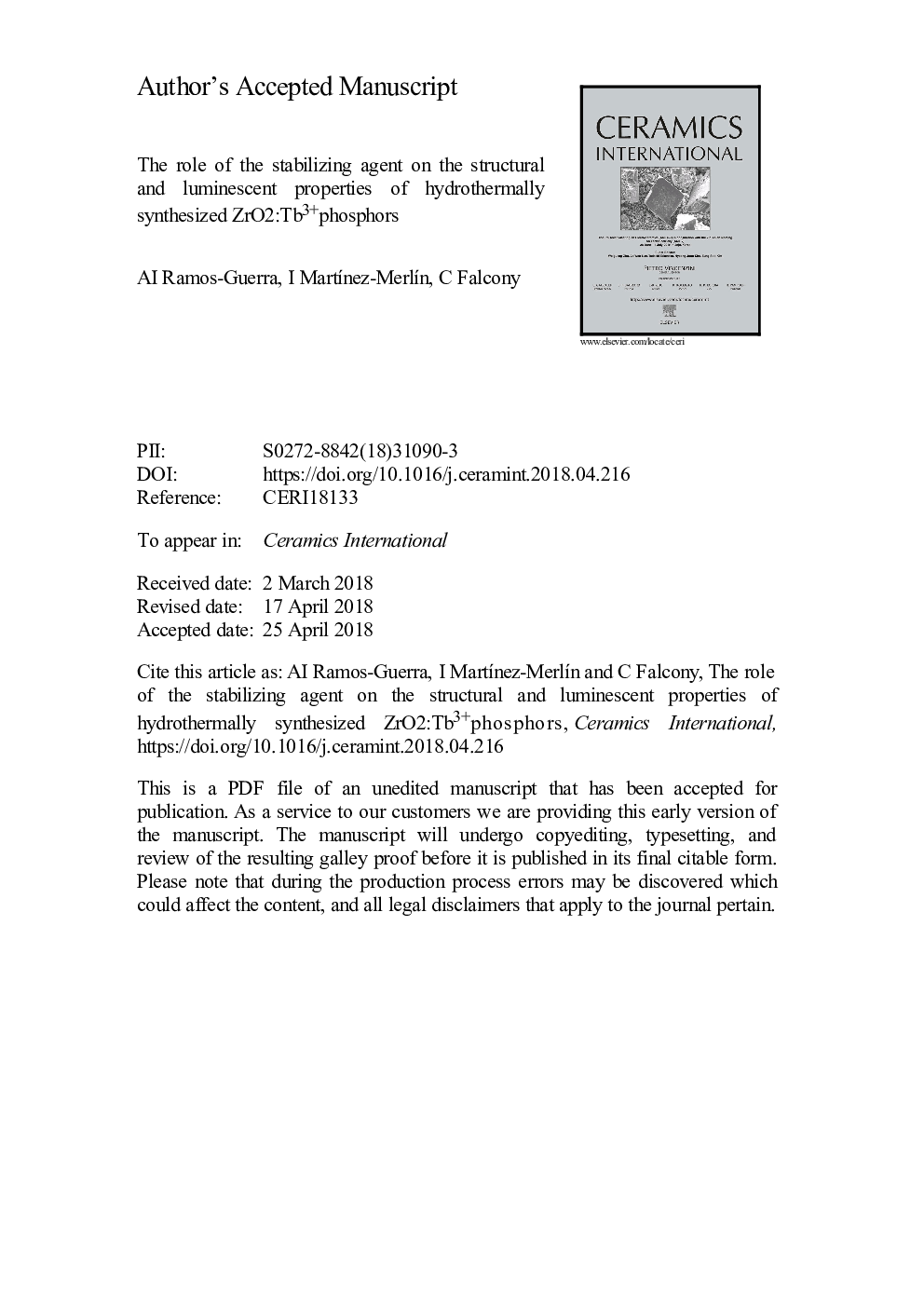| Article ID | Journal | Published Year | Pages | File Type |
|---|---|---|---|---|
| 7886435 | Ceramics International | 2018 | 23 Pages |
Abstract
Zirconium oxide powders doped with terbium, synthesized by hydrothermal route from a highly basic solution, were used to determine the role of the basic agent (NaOH, KOH or LiOH) utilized to carry out the hydrothermal synthesis on their morphology, crystalline structure, photoluminescent or cathodoluminescent properties. The synthesized powders showed an amorphous/polycrystalline nature with tetragonal phase crystallites of ZrO2. The ratio of material undergoing the transformation from amorphous to crystalline is highly influenced by the kind of stabilizing agent used. As for the photoluminescence (PL) and cathodoluminescence (CL) results, the samples present the characteristic emission lines corresponding to inter electronic energy levels transitions for Tb3+ ions (5D4 â 7FJ (Jâ¯=â¯3-6) transitions). The photoluminescence excitation spectra present a broad peak centered at 250â¯nm for all samples, however the sample prepared with LiOH as basic agent presented an additional peak at 290â¯nm which much likely is related to localized centers introduced by Li+ ions into the ZrO2 crystallites.
Related Topics
Physical Sciences and Engineering
Materials Science
Ceramics and Composites
Authors
A.I. Ramos-Guerra, I. MartÃnez-MerlÃn, C. Falcony,
